May 15, 2025 | 00:45 GMT +7
May 15, 2025 | 00:45 GMT +7
Hotline: 0913.378.918
May 15, 2025 | 00:45 GMT +7
Hotline: 0913.378.918
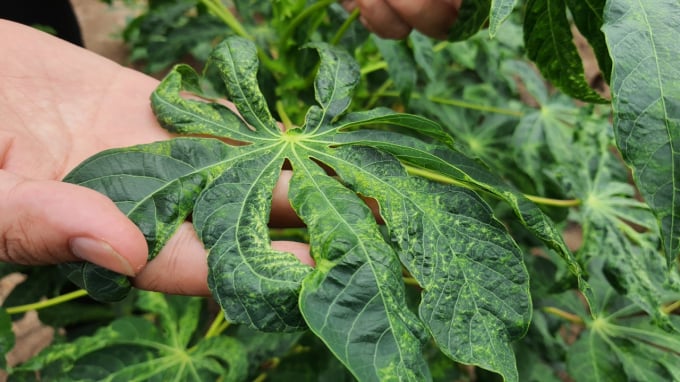
Cassava mosaic disease is breaking out in the North Central Highlands. Photo: Tuan Anh.
According to the Sub-Department of Cultivation and Plant Protection in Gia Lai, in the recent three years, the CMD has continuously damaged almost the area of cassava cultivation in northern and south-northern districts of the province. By June 23, it spread to an area of 1,000 ha, concentrating in some districts of An Khe, Ia Pa, Krong Pa. The disease is categorized as dangerous with the possibility of spreading quickly and difficult to prevent.
The disease will reduce the amount of starch accumulated in cassava tubers leading to the reduction in selling price, directly affecting farmers’ income.
Dinh Xuan Duyen, Head of the Department of Agriculture and Rural Development of Krong Pa district said that there is more than 20,000 ha of cassava in the district, and cassava areas in all communes are affected by CMD posing risks of spreading quickly. In Chu Ngoc commune alone, there are more than 1,300 hectares of cassava growing, with 50% of them suffering from the disease.
The main reason leading to mosaic disease in cassava was due to old varieties. Duyen said that to overcome the CMD, farmers should switch to other crops for a while and then return to cassava planting. Instead of picking the old varieties, people should choose the KM94 variety, which is resistant to the disease.
According to the instruction of the subdepartment, farmers should zone the area with powdery mildew to spray insecticides to prevent the spread of disease to the off-season cassava area. For the main-crop cassava area, it is necessary to spray powdery mildew before uprooting, collecting, and destroying all cassava plants in the field for heavily infected areas.
Farmers need to avoid HL-S11 cassava variety as well as examine to ensure disease-free origin. Besides, localities should encourage farmers to shift the infected area to another crop for one year to cut off the disease source before re-planting cassava.
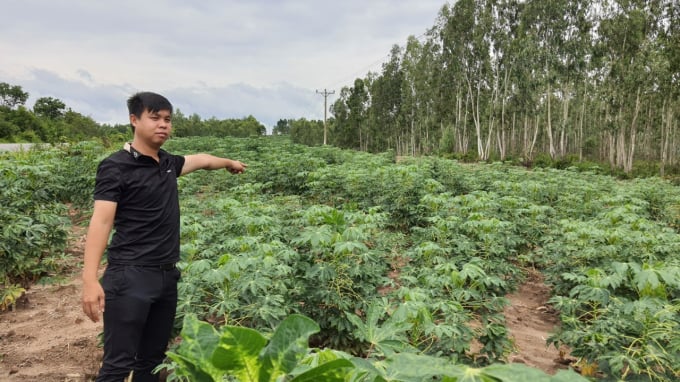
Thousands of hectares of cassava growing area of people suffer from leaf mosaic disease. Photo: Tuan Anh.
In Kon Tum, there is an increasing area infected with CMD, prompting the provincial agricultural sector to urgently implement measures to prevent.
As of July 7, the province had 363ha of cassava infected with leaf mosaic disease. The city of Kon Tum is the locality with the most infected cassava area with over 315ha and the disease affects the off-season cassava area (planted in September 2020, harvested in September 2021).
Authority of the Sub-Department of Cultivation and Plant Protection of Kon Tum province said that in previous years, cassava mosaic disease only occurred in a small area and did not form serious outbreak as today.
Mentioning the cause, the authority said that it was due to the unknown origin of cassava bought from markets or planted from the variety with the existed disease. In addition, due to the unusual weather this year, in June there were prolonged droughts that created favorable conditions for powdery mildew to thrive, creating conditions for leaf mosaic virus to be transmitted from sick to healthier plants.
Regarding the remedy, the local agricultural leader said that for the off-season cassava area, the province has directed localities to zone and spraying insecticides against powdery mildew, limiting the spread of disease. At the same time, people need to harvest early to make full use of tubers and destroy all remnants of infected plants.
For the main-crop cassava area, it is necessary to spray powdery mildew insecticide before uprooting and destroying the heavily infected areas and the plants in the light and medium infected areas. At the same time, it instructed households to swift to suitable crops on infected cassava areas, not to reuse infected varieties for the next crop.
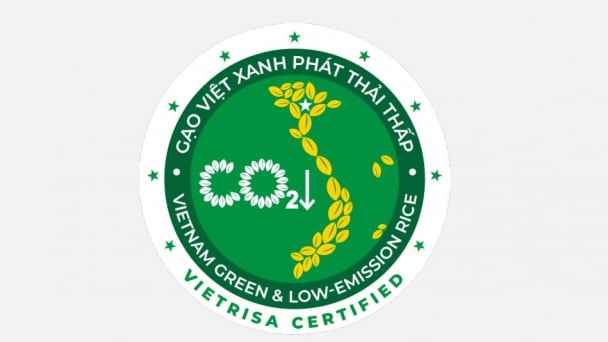
(VAN) The launch of the Vietnam green and low-emission rice brand is a positive signal for both businesses and farmers, marking readiness to reach new heights in the global market.

(VAN) The U.S. tariff will have a significant impact on Vietnam’s wood industry as well as the U.S. furniture market. A reasonable tariff rate would be beneficial for both sides.
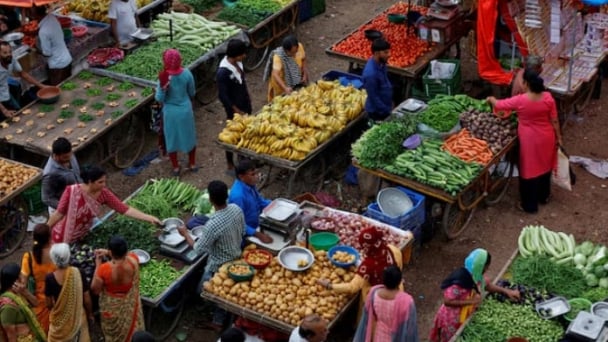
(VAN) India's retail inflation remained below the central bank's 4% target for the third consecutive month as food prices rose at a slower pace, opening up room for more interest rate cuts.
![Multi-channel, multi-directional Vietnamese agricultural markets: [5] Safety is the key](https://t.ex-cdn.com/nongnghiepmoitruong.vn/608w/files/linhnhp/2025/05/13/trai-cay-viet-nam-170345_133-221148-0908330.jpg)
(VAN) The Middle Eastern market presents new opportunities for Vietnamese agricultural products, but safety in product quality, payment, and partnership relations is a fundamental principle.

(VAN) Vietnam's participation in the AGROALBA project helps open up broader investment opportunities for enterprises to access markets in the fields of agriculture.

(VAN) On May 13, Deputy Minister of Agriculture and Environment Phung Duc Tien held a meeting with Cuban Deputy Minister of the Food Industry Javier Francisco Agular Rodriguez.
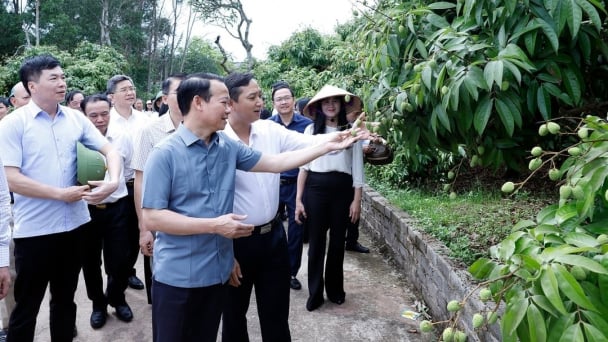
(VAN) Agriculture and environment sector experienced a 3.74% increase in growth during the first four months of 2025, with exports surpassing 21 billion USD. This growth was sustained by effective reforms and a trade surplus.